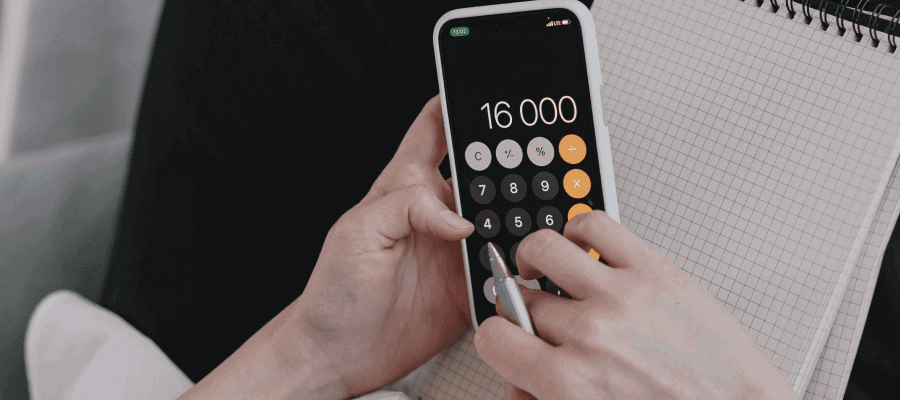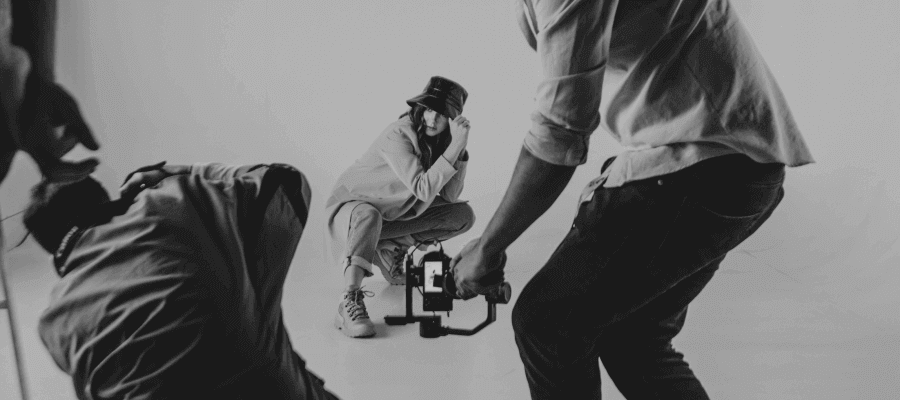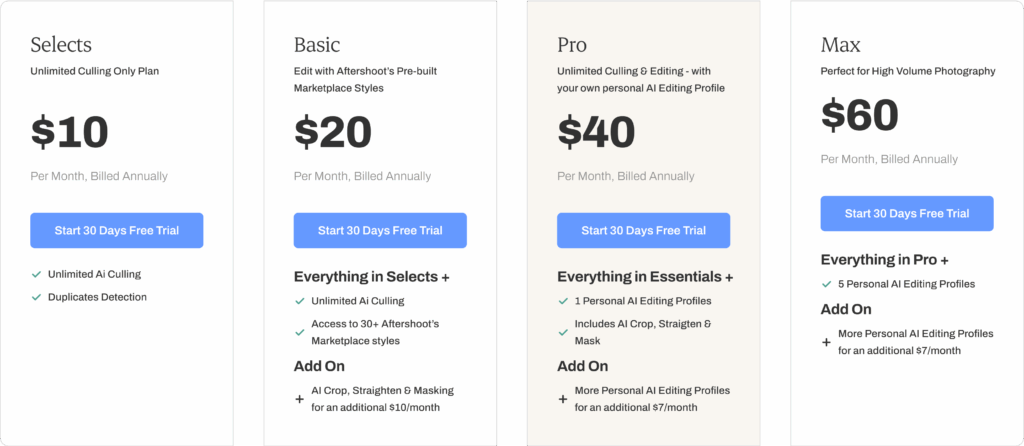The Beginner’s Photography Pricing Guide + Free Pricing Calculator
Launching a photography business isn't just about getting booked and capturing images; it's also about setting your pricing right and making sure you've taken into account all the aspects - your expenses, your income goal, your taxes, and more.
Pricing yourself appropriately is not only crucial for your profitability but also for the sustainability and growth of your business.

If you’re just starting a photography business, the right approach and tools can help you establish a pricing structure that accurately reflects your value from the get-go. Determining your worth and setting fair prices starts with understanding:
- Desired income
- Your cost of doing business
- Time invested, and
Get started with our FREE PHOTOGRAPHY PRICING CALCULATOR to determine your charges
We hope our photography pricing calculator gave you the clarity you needed. If you're just starting your journey as a photographer and wondering, "How should I price my photography?" — this photography pricing guide is here to help you find the answers you've been looking for.
Now, let's dive into our pricing guide. We will explore the key steps to pricing yourself as a photographer, including calculating your cost of doing business.
We’ll also explore how leveraging Aftershoot for culling, editing, and retouching can provide the benefit of predictable expenses with its flat-rate pricing model.
Before we dive in
Here's a quick list of guides to check out to kickstart your business
- A Complete Guide to Taxes for Photographers
- A Guide to Marketing for Photographers
- How to Start a Photography Blog
- Winning Email Marketing Guide to Help You Book Clients
Now let's help you get your photography pricing sorted!
What is your cost of doing business (CODB)?
Before setting your prices, it's essential to calculate your cost of doing business (CODB).
Your CODB transcends surface-level expenses. It involves determining all the expenses associated with running your photography business, such as:
- Equipment maintenance
- Insurance
- Software subscriptions
- Marketing costs
- Rent
- Utilities, and more
Thoroughly assessing your fixed and variable expenses can help you establish a baseline for covering your business overhead and generating a profit.
Looking for a marketing guide to help you book more clients? Download our playbook on booking more clients as a photographer
How to Evaluate Your Time & Effort?
Beyond the numbers, your time and effort are immeasurable assets. In addition to your CODB, you need to consider the time you invest in each project. Assess how many hours you spend on a shoot, editing, client communication, and other related tasks.
It's crucial to recognize that your creative vision, expertise, and unique touch contribute significantly to the value you offer.
Remember that your time has value, and your pricing should reflect the quality and dedication you offer to your clients.

How to Research the Market?
Embarking on effective pricing entails more than just internal calculations; it involves understanding the external landscape. Conduct thorough market research to gain insights into the industry standards and competitive pricing in your area.
Explore what other photographers with similar experience and specialties are charging. According to Professional Photographers of America, "on average, photographers make about 20% of their total income. That means if you charge $100 for a shoot, only $20 goes to you as pay—the rest covers things like new equipment, maintenance, software, and healthcare."
Pro tip: Create a spreadsheet to compare how other photographers are charging in your area. Consider factors like level of experience, niche, and pricing models to understand what might work for your business.
While it's important to be aware of the market rates, it's equally vital to assess the unique value and quality you bring to differentiate yourself from the competition.
To craft a competitive yet distinct pricing strategy, strike a balance between industry norms and your unique offerings.
How Much Do Photographers Make?
Photographers in the U.S. earn a wide range of incomes depending on their niche, experience, location, and business model. According to the U.S. Bureau of Labor Statistics, the median hourly wage for photographers is $20.44. The lowest 10% earn less than $14.23 per hour, while the top 10% make over $45.56 per hour.
Annual earnings vary widely — while many photographers earn around $40,000 a year, freelancers and those specializing in weddings, portraits, or commercial work often earn $50,000 to $100,000 or more, depending on how they price their services and grow their client base. Success often comes down to effective pricing, consistent marketing, and building a strong client base.
How to Tailor Your Prices to Your Target Market?
Consider your target market and the type of clients you wish to attract. Prices should align with the perceived value you offer to your specific audience. Make sure you don't undercharge yourself.
"While my "cheap" rates skyrocketed my bookings as word spread throughout the acting community, I soon faced a predicament," said Jeremy Bustin, a portrait and headshot photographer. "Pricing wasn't just about numbers; it was intrinsically linked to my quality of life. Every entrepreneur will tell you about the importance of work-life balance, but it's the strategies you deploy—like pricing—that truly make it possible," he added.
High-end clients may be willing to pay a premium for exceptional quality and personalized service, while budget-conscious clients may seek more affordable options.
For instance, some clients may want to do a trial run before hiring you for larger projects. In such cases, you can offer mini-sessions. This can be priced independently of your regular pricing, allowing clients flexibility to choose from your services
Tailor your pricing to align with your target market's perception of value.
Craft a pricing structure that communicates your unique benefits effectively to different segments, creating a connection that goes beyond numbers.
Read this guide if you want to dig deep to understand how to price your wedding photography. Wedding photographer, Paul Waring discusses how photographers should approach pricing in this competitive market.
How to Control Your Expenses?
In this photography pricing guide, we covered how to understand your market and identify the type of clients you want to work with. But just as important is building predictable expenses into your Cost of Doing Business (CODB) — so you have a clear idea of what you’ll need to pay each year to keep your business running smoothly.
A great way to control your expenses is to use tools that have flat pricing structures – meaning, you pay a fixed monthly or yearly fee for the service instead of having to manage a fluctuating expense every month.
Tools like Aftershoot help you save hours of culling and editing time while enabling you to get a clear idea of what you spend every year. Aftershoot’s flat-rate pricing model helps you understand early how much you are spending on your post-production tools.

The straightforward and transparent photography pricing structure allows you to budget more effectively, ensuring that your costs remain consistent regardless of the number of images or the complexity of the editing required.
This stability helps you maintain a clear understanding of your photography expenses and allows for better financial planning.
Struggling to find the right tools for your business? Check out our guides:
- 10 Best CRM for Photographers
- 16 Best Online Proofing Galleries for Photographers
- Pictime vs Pixieset: Which One Should Photographers Use?
How to Reassess Your Photography Pricing?
Remember that pricing is not a static process. It's crucial to regularly reassess and fine-tune your pricing structure as your expertise grows, business evolves, portfolio expands, and markets shift.
As you gain experience, expand your portfolio, target new markets, and market your photography business, you may need to adjust your prices to reflect your growing expertise and demand.
Continuously monitor market trends, evaluate your profitability, and be willing to make necessary adjustments to maintain a sustainable and profitable photography business.
Don’t be afraid to experiment with different pricing models to see what works best for your business and your clientele.
For example, charging a:
- Flat rate, all included
- Session fee + digital packages
- Session fee + in-person sales for prints
Read also: How to Build an Engagement Photography Session Package that Sells Itself?
How Much Should I Charge for Photography?
Determining your photography rates can be challenging, but understanding different pricing models can help you find the best approach for your business. It is important to ensure that your clients understand what is included in the package they are purchasing. Here’s a quick overview of different photography pricing models that you can adopt for your business:
Hourly Rate
This model charges clients based on the hours worked. It’s ideal for event photography, where the time spent on location is easy to estimate. You can also use this model for mini-sessions, where the pricing can be done based on the hours booked. Usually, you might find photographers charging between $50 to $250, but it also depends on factors like experience or niche
Per Project
This flat fee covers an entire project, regardless of how much time it takes. It’s often used for weddings or corporate shoots, where clients prefer knowing the total cost upfront. This means that your pricing can range from a few hundred dollars to a thousand based on the complexity of the project and client demands. For instance, wedding photographers on average charge between $2000 to $5000.
Packages
Offer clients a selection of bundled services at a set price. For example, a wedding package might include a pre-wedding shoot, full-day coverage, and a photo album. Packages provide value to clients and streamline pricing.
Day Rate
Similar to the hourly rate, but for a full day of work. This is common for commercial or editorial photography, where a photographer’s presence is required for an extended period.
Print and Digital Pricing
Charge separately for prints and digital files. This model allows photographers to offer lower upfront session fees while generating additional revenue through print and digital sales.
Retainer
Clients pay a recurring fee to retain your services over a period of time. This is common with businesses needing regular photography work, like real estate or product photography.
Each of these models can be adapted to fit your unique business needs, helping you set fair and profitable rates.
Your FREE Photography Pricing Calculator
To make your pricing calculations easier, we’ve created a pricing calculator to help determine your CODB and set up a base pricing model for your photography business. This calculator can be used by any type of photographer - wedding, portraits, event, headshot, etc.
Access our photography pricing calculator at the beginning of the article or use this Google Sheet to get started. Make a copy to fill in your details
Your Photography Pricing Guide to Long-Term Success
As a photographer, pricing is your ticket to sustainable success.
However, pricing yourself as a photographer is a complex undertaking that requires careful consideration of various factors, including your cost of doing business, market rates, target audience, and the value you bring to your clients.
By integrating well-informed pricing strategies, you're not just capturing moments; you're capturing value!
With thorough research, an understanding of your expenses, and a clear pricing strategy, you can confidently set prices that reflect your worth and generate sustainable income.
Incorporating tools like Aftershoot can further enhance your pricing strategy by providing predictable expenses through its flat-rate pricing model.
By mastering the art of pricing yourself as a photographer, you can build a thriving business that rewards your talent, dedication, and passion.
Frequently Asked Questions: Photography Pricing
1. How much should I charge as a beginner photographer?
As a starting point, beginner photographers might charge between $50 to $150 per hour for events, and $500 to $1,500 for a full-day wedding shoot. It's essential to consider your time, expertise, and the value you provide when setting your rates.
2. What factors influence photography pricing?
Several elements can affect photography pricing, including:
Experience and expertise of the photographer
Type and duration of the shoot
Post-production and editing time
Equipment and travel expenses
Usage rights and licensing requirements
Understanding these factors helps in setting fair and competitive prices.
3. Should I include usage rights in my pricing?
Yes, especially for commercial photography. Licensing determines how clients can use your images, and broader usage rights typically warrant higher fees. Always clarify the scope and duration of usage rights in your contracts.
4. How do I calculate my cost of doing business (CODB)?
Calculate your CODB by summing up all annual business expenses, including equipment, software, insurance, marketing, and other overheads. Divide this total by the number of billable hours or projects you plan to undertake annually to determine your minimum rate to cover costs.
5. Is it better to offer packages or hourly rates?
Offering packages can provide clarity and value to clients, especially for events like weddings. However, hourly rates might be more suitable for shorter or more flexible sessions. Consider your services and client preferences when deciding.
6. How often should I review and adjust my pricing?
Regularly assess your pricing, at least annually, to account for changes in expenses, market demand, and your growing experience. Adjusting your rates ensures sustainability and reflects the value you offer.
